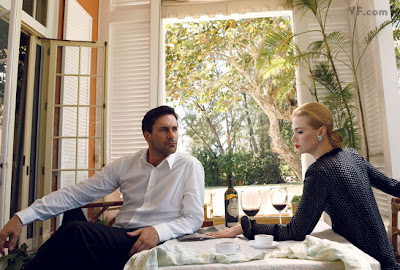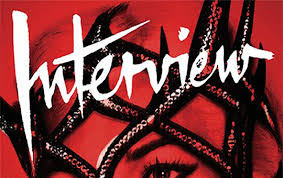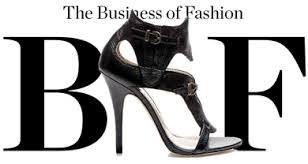 Opening Credits
Opening Credits_____________________________________________
Don and Betty's Paradise Lost
Entering its third season on a fresh wave of Emmy nominations, AMC’s Mad Men is the most stylish—and perhaps best—show on television. Inside its meticulous reconstruction of the precipice that was New York advertising circa 1960, where the men and women of Sterling Cooper smoke, drink, love, and lie, the author learns about the struggle of Mad Men creator (and former Sopranos writer) Matthew Weiner, the casting of Jon Hamm and January Jones as Don and Betty Draper, and the obsession that fuels each episode. (Photographs by Annie Leibovitz.)
 THE thumbnail history of Hollywood goes something like this: Once upon a time, the studios reigned supreme. They bulldozed geniuses and turned out dreck, but in applying Henry Ford discipline and efficiencies to filmmaking they also gave us The Lady Eve, Casablanca, and Singin’ in the Rain. By the 1960s, however, the factory system began to give way, power shifted to directors and stars, and a new generation of independent-minded auteurs crafted sometimes indulgent but often original and even brilliant films such as Bonnie and Clyde, Midnight Cowboy, Taxi Driver, and Apocalypse Now. Then, another turn: studios got the upper hand back, or learned to share it grudgingly with a handful of superstars and A-list directors. But without the old assembly-line rigor the result has too often been big, bloated dreck, like the films of Michael Bay, or the gaseous Oscar bait that bubbles up every fall—the worst of all movie worlds.
THE thumbnail history of Hollywood goes something like this: Once upon a time, the studios reigned supreme. They bulldozed geniuses and turned out dreck, but in applying Henry Ford discipline and efficiencies to filmmaking they also gave us The Lady Eve, Casablanca, and Singin’ in the Rain. By the 1960s, however, the factory system began to give way, power shifted to directors and stars, and a new generation of independent-minded auteurs crafted sometimes indulgent but often original and even brilliant films such as Bonnie and Clyde, Midnight Cowboy, Taxi Driver, and Apocalypse Now. Then, another turn: studios got the upper hand back, or learned to share it grudgingly with a handful of superstars and A-list directors. But without the old assembly-line rigor the result has too often been big, bloated dreck, like the films of Michael Bay, or the gaseous Oscar bait that bubbles up every fall—the worst of all movie worlds.But, ah, television. Its great accomplishment over the past decade has been to give us the best of all movie worlds, to meld personal filmmaking, or series-making, with something like the craft and discipline, the crank-’em-out urgency, of the old studio system. I’m thinking first and foremost of The Sopranos, which debuted in 1999 and sadly departed in 2007. This strange and entertaining series, as individual a work as anything by Hitchcock or Scorsese, was the creation of David Chase, and it paved the way for The Wire, Deadwood, Rescue Me, Damages, and its successor as the best drama on television, the equally strange and entertaining Mad Men, which will launch its third season on AMC August 16.
Set in an advertising agency in the early 1960s, Mad Men debuted two summers ago and right off the bat earned itself two Golden Globes and a Peabody Award, and was nominated for 16 Emmys, becoming the first basic-cable series to win for outstanding drama. Its second season, no sophomore slump, has been nominated for another 16 Emmys, including best drama and four out of five possible writing nominations. A more interesting measure of the show’s impact is the fact that its title has become a kind of shorthand: you can now talk about a Mad Men skirt or lampshade or pickup line where once you might have used “space age” or “Kennedy era” or “Neanderthal.” But while the show, like its subject, has many surface pleasures—period design, period bad behavior (if you like high modernism, narrow lapels, bullet bras, smoking, heavy drinking at lunch, good hotel sex, and bad office sex, this is the series for you)—at its core Mad Men is a moving and sometimes profound meditation on the deceptive allure of surface, and on the deeper mysteries of identity. The dialogue is almost invariably witty, but the silences, of which there are many, speak loudest: Mad Men is a series in which an episode’s most memorable scene can be a single shot of a woman at the end of her day, rubbing the sore shoulder where a bra strap has been digging in. There’s really nothing else like it on television. [...]
 "I’m of the persuasion that budget contraints are very, very good for creativity. I think people having unlimited amounts of money makes you really lazy. And I will be quoted on that, believe it or not.” The speaker turning his back on decades of Hollywood wisdom was Matthew Weiner, 44, the auteur behind Mad Men, who also has a Sopranos pedigree, having written for that series during its final three seasons. As Mad Men’s creator and show-runner—the industry term for whoever has ultimate creative responsibility for a series, typically a writer- producer—he has imbued his own series with a similarly novelistic richness, scope, and meticulous sense of craft. He talks about “training the audience” to learn how to read the show, and says things like “It’s been a process for the audience to trust the show on some level, to think that we’re thinking about it as much as they hope we are.” [...]
"I’m of the persuasion that budget contraints are very, very good for creativity. I think people having unlimited amounts of money makes you really lazy. And I will be quoted on that, believe it or not.” The speaker turning his back on decades of Hollywood wisdom was Matthew Weiner, 44, the auteur behind Mad Men, who also has a Sopranos pedigree, having written for that series during its final three seasons. As Mad Men’s creator and show-runner—the industry term for whoever has ultimate creative responsibility for a series, typically a writer- producer—he has imbued his own series with a similarly novelistic richness, scope, and meticulous sense of craft. He talks about “training the audience” to learn how to read the show, and says things like “It’s been a process for the audience to trust the show on some level, to think that we’re thinking about it as much as they hope we are.” [...]“Matt wants real,” said Charlie Collier, president of AMC. For Weiner, Collier continued, “it’s not television; it’s a world.” Perhaps the only other producer as committed to the rules of his imagined universe is George Lucas. “Perfectionism” is a word the show’s writers tossed around when I asked a group of them about working with Weiner. “Fetishism” was another. Alan Taylor, who has directed four episodes of Mad Men, labeled Weiner’s attention to detail “maniacal.” Call it what they will, it is a charge that is largely embraced. “We’re all a little bit touched with the O.C.D.,” Robin Veith, one of the writers, told me, describing how she and her colleagues have researched actual street names and businesses in Ossining, the suburb where Don and Betty live; checked old commuter-train schedules, so that they know precisely which train Don would take to the city; pored over vintage maps to learn which highways he would drive on. [...]
 Mad Men is too clear-eyed about its period to be called nostalgic — Weiner loves writing anti-Semitic wisecracks for his admen and showing pregnant women with cigarettes dangling from their lips—but at the same time there can be a yearning tug, even an ache, in the intensity of the show’s backward gaze. Maybe it’s a kind of wised-up, at times even loathing nostalgia—precisely the kind of contradiction that drives the show creatively. Weiner has said in the past that the series is in some sense a tribute to his parents, an attempt in part at reconstructing their world. They were married in 1959, right at the dawn of the Mad Men era; the ceramic chip ’n’ dip that the anxious account executive Pete Campbell (played by Vincent Kartheiser) and his wife received as a wedding present in the first season was actually given to Weiner’s parents. Another touchstone is Weiner’s late maternal grandfather, a sharp dresser who worked in New York in the fur business (where Don got his start in advertising). Weiner told me he used to wear his grandfather’s sharkskin suits in high school, and, for the pilot, made a point of dressing an extra in his grandfather’s herringbone topcoat.
Mad Men is too clear-eyed about its period to be called nostalgic — Weiner loves writing anti-Semitic wisecracks for his admen and showing pregnant women with cigarettes dangling from their lips—but at the same time there can be a yearning tug, even an ache, in the intensity of the show’s backward gaze. Maybe it’s a kind of wised-up, at times even loathing nostalgia—precisely the kind of contradiction that drives the show creatively. Weiner has said in the past that the series is in some sense a tribute to his parents, an attempt in part at reconstructing their world. They were married in 1959, right at the dawn of the Mad Men era; the ceramic chip ’n’ dip that the anxious account executive Pete Campbell (played by Vincent Kartheiser) and his wife received as a wedding present in the first season was actually given to Weiner’s parents. Another touchstone is Weiner’s late maternal grandfather, a sharp dresser who worked in New York in the fur business (where Don got his start in advertising). Weiner told me he used to wear his grandfather’s sharkskin suits in high school, and, for the pilot, made a point of dressing an extra in his grandfather’s herringbone topcoat.One thing he quite consciously set out to do with Mad Men was to reclaim the 1950s and early 1960s from the condescension of “baby-boomer propaganda,” as he put it, the easy ironies with which the era has been caricatured in popular culture. “You know,” he continued, rattling off some cultural clichés, “Fun with Dick and Jane, the dad with the pipe, Ozzie & Harriet“—goofy and square and uptight and supposedly innocent, no one having sex, or good sex anyway, except for maybe Frank Sinatra. “We think everybody was walking around in corsets, but people are people,” Weiner said, and cited a 1968 episode of Firing Line he once saw in which a drunken Jack Kerouac was interviewed by William F. Buckley Jr. on the subject of “the hippie movement” and said to the younger generation, in essence, “You think you invented fucking?” Don Draper and his colleagues at Sterling Cooper, the women as well as the men, would seem to be asserting the same point. [...]
 Don Draper was the trickiest role to cast, since the actor would have to not only be credible as a man who essentially lies for a living—and doubles down on those lies at home—but also, as the lead, command sympathy. With extensive television experience on shows such as Providence, The Division, and CSI: Miami but no lead credits, Jon Hamm read for the part early on and survived several further auditions. But according to Alan Taylor, a Sopranos director who directed the Mad Men pilot and was involved in the casting, Weiner and he held off committing to Hamm because of a “reverse prejudice” about the actor’s good looks. “I think Matt and I, coming off Sopranos, both had a kind of bias because we had a wonderful experience with Jim Gandolfini, and there is a kind of superiority that goes along with that kind of casting—you know, Look, we’re not casting a movie star, we’re casting a great actor.” But Weiner and Taylor kept coming back to Hamm. “It was a wonderful turning point when we put him through the process of hair and makeup,” Taylor said, “and the first time we saw him with his haircut and his suit, all the women in the office kind of wilted and fainted when he walked by. He was this wonderful icon of maleness, and it took us almost that long to catch up to the fact that it was perfect to cast sort of the perfect male in this part, because what we were doing [in the show] was basically deconstructing that. I mean, that’s just one layer of what he brought. Obviously the other thing that made us go back to him again and again was this wonderful sadness and lost quality in his eyes. It’s a rare quality for someone who’s a strapping leading man.”
Don Draper was the trickiest role to cast, since the actor would have to not only be credible as a man who essentially lies for a living—and doubles down on those lies at home—but also, as the lead, command sympathy. With extensive television experience on shows such as Providence, The Division, and CSI: Miami but no lead credits, Jon Hamm read for the part early on and survived several further auditions. But according to Alan Taylor, a Sopranos director who directed the Mad Men pilot and was involved in the casting, Weiner and he held off committing to Hamm because of a “reverse prejudice” about the actor’s good looks. “I think Matt and I, coming off Sopranos, both had a kind of bias because we had a wonderful experience with Jim Gandolfini, and there is a kind of superiority that goes along with that kind of casting—you know, Look, we’re not casting a movie star, we’re casting a great actor.” But Weiner and Taylor kept coming back to Hamm. “It was a wonderful turning point when we put him through the process of hair and makeup,” Taylor said, “and the first time we saw him with his haircut and his suit, all the women in the office kind of wilted and fainted when he walked by. He was this wonderful icon of maleness, and it took us almost that long to catch up to the fact that it was perfect to cast sort of the perfect male in this part, because what we were doing [in the show] was basically deconstructing that. I mean, that’s just one layer of what he brought. Obviously the other thing that made us go back to him again and again was this wonderful sadness and lost quality in his eyes. It’s a rare quality for someone who’s a strapping leading man.”That was something Weiner had picked up on right away. In his recollection he settled on Hamm the first time he saw him: “He was the only person I saw that I felt had this old-fashioned masculinity that reminded me a little of James Garner, or William Holden, or the other movie stars that I loved who were Boy Scouts.” There was something more: According to a recent profile of Hamm in GQ, after the actor read for Mad Men for the first time, Weiner turned to the casting agent and declared, “That man was not raised by his parents.” Which was true: Hamm’s mother had died when he was 10; he had been mostly raised by a grandmother and had a difficult relationship with his father, who himself died when Hamm was 20. Weiner’s observation was not only perceptive—and a little odd—but also relevant: Don’s backstory, which dribbled out across the first season, has him orphaned at a young age. (Hamm dryly told me that the parallel with his own childhood was “serendipitous.”)
In Weiner’s view, Hamm’s upbringing contributed not only to the vulnerability he brings to the role but also the wit, an underappreciated current in Hamm’s performance. “The most valuable thing on television and everywhere is when you find someone who is physically attractive and funny,” Weiner said. “It’s very unusual. At least that’s the common conception among people who cast for a living. Barbara Miller”—the late casting director who had ER, Friends, and The West Wing to her credit—“is often quoted as saying, ‘God doesn’t give with both hands.’ You’re attractive or you’re funny. And I would say to the casting people, ‘Where’s the funny, good-looking person?’ And they’re like, ‘Everyone who’s beautiful and funny is already in the movies.’ And then you find someone who basically has some kind of deprivation that has made it so they don’t even know how attractive they are.” [...]
 Mad Men’s audience has grown steadily since its premiere, in July 2007. The first season averaged fewer than a million viewers, the second season 1.8 million, with more than 2 million watching the season finale, though the economics of these numbers are open to interpretation. (By way of raw comparison, recent episodes of TNT’s The Closer have been drawing more than six million viewers.) “I’m sure if you talk to anybody at AMC,” said Hamm, who is an astute observer of the television industry, “depending upon who else was in the room, they’d either say they were thrilled with the numbers or they were devastated—whatever argument sort of serves their particular audience at that moment. If they’re standing in front of a bunch of advertisers, I’m sure they’re going to tell you how wonderful and culturally groundbreaking and important our show is, therefore they have to charge you x more dollars. But if they’re standing in front of the people asking for more money on the budget, I’m sure they’re going to say, ‘Well, it’s not making any money and we don’t know … ’”
Mad Men’s audience has grown steadily since its premiere, in July 2007. The first season averaged fewer than a million viewers, the second season 1.8 million, with more than 2 million watching the season finale, though the economics of these numbers are open to interpretation. (By way of raw comparison, recent episodes of TNT’s The Closer have been drawing more than six million viewers.) “I’m sure if you talk to anybody at AMC,” said Hamm, who is an astute observer of the television industry, “depending upon who else was in the room, they’d either say they were thrilled with the numbers or they were devastated—whatever argument sort of serves their particular audience at that moment. If they’re standing in front of a bunch of advertisers, I’m sure they’re going to tell you how wonderful and culturally groundbreaking and important our show is, therefore they have to charge you x more dollars. But if they’re standing in front of the people asking for more money on the budget, I’m sure they’re going to say, ‘Well, it’s not making any money and we don’t know … ’”And what would they say to a journalist? “We’re looking for continuing growth, obviously,” said Charlie Collier, AMC’s president. “But as with a lot of franchises, we have targets that go well beyond ratings. We look at Mad Men as an asset on multiple levels, including pop-cultural relevance. Obviously it did well for the brand. We had a parody of our opening on The Simpsons. We’ve been a category on Jeopardy. Last year, Bloomingdale’s [in New York] put Mad Men in their windows along the entire Third Avenue side.” This season, the “brand” will be further plumped by a tie-in with Banana Republic. [...]
_____________________________________________
Behind the Scenes with Bruce Handy (vid)
If you look in these photos, there's a fair amount of distance between the two of them - they're not making eye contact with each other; they're looking off in different directions...
_____________________________________________
'Mad Men' Has Its Moment
 [NYTimes.com - Jne.22/08]
[NYTimes.com - Jne.22/08]Matthew Weiner stood on the set of his hit show, Mad Men, ready for his close-up in extreme anxiety. He was watching the rehearsal of a scene that seemed fine to me, better than fine, but his staccato commentary was a scene in itself.
“He should be standing,” he said of an actor who was seated.
“That should be on the table,” he said of an accordion folder that an actress had placed on the floor.
“They’re overreacting, paying too much attention to each other.” He heard himself and looked slightly sheepish. “You’ll see it turn from theater to movie in the next take,” he told me. “I want them not to pay too much attention to each other, so it feels real, more perfunctory. Not that TV thing.” His smile was wry. “I’m very impatient.”
He should give himself a break. Everyone else has. “Mad Men,” about the world of advertising on Madison Avenue set in New York in the early 1960s, languished for years after being rejected by HBO and Showtime before the unlikely AMC (formerly known as American Movie Classics) picked it up, making for its first scripted drama series. The show had its premiere last summer and won instant critical acclaim, a Peabody Award and the Golden Globe Award for best drama. Its second season begins July 27; the DVD set of the first season goes on sale July 1.
Weiner (pronounced WHY-ner) is the creator and show-runner of “Mad Men,” which means the original idea was his: he wrote the pilot; he writes every episode of every show (along with four other people); he’s the executive producer who haggles for money (he says that his budget is $2.3 million per episode and that the average budget for a one-hour drama is $2.8 million); and he approves every actor, costume, hairstyle and prop. Though he has directed episodes, most of the time he holds a “tone meeting” with the director at which he essentially performs the entire show himself so it’s perfectly clear how he wants it done. He is both ultimate authority and divine messenger, some peculiar hybrid of God and Edith Head. “I do not feel any guilt about saying that the show comes from my mind and that I’m a control freak,” he told me. “I love to be surrounded by perfectionists, and part of the problem with perfectionism is that by nature, you’re always failing.” [...]
Weiner’s achievements with “Mad Men,” which is produced by Lionsgate, are plentiful, starting with the storytelling. Setting it in the early 1960s, on the cusp between the repression and conformity of the cold war and McCarthy-era 1950s and the yet-to-unfold social and cultural upheavals of the 60s, allows Weiner an arc of character growth that is staggering in its possibilities. It also gives him the opportunity to mine the Rat Pack romance of that period, when the wreaths of cigarette smoke, the fog of too many martinis — whether exhilarating or nauseating — and the silhouettes specific to bullet bras only heightened the headiness of the dream that all men might one day become James Bond or, at the very least, key holders to the local Playboy Club.
Deepening the tension between that fantasy and reality, Weiner has put Sterling Cooper, the fictional ad agency that employs the show’s characters, on the old-school, WASP side of the equation, letting them revel in their racism, sexism and anti-Semitism. It was during that period that the creative revolution in advertising was taking off at agencies like Grey and Doyle Dane Bernbach, where Jews and some women held leadership positions. That Sterling Cooper’s creative director, Don Draper, is played by Jon Hamm, a leading man in the Gregory Peck mold who manages to make his sometimes oblique and often heartless character into a sympathetic figure (and won a Golden Globe for best actor), eases the pain. [...]
Weiner chose advertising as a subject, he said, because “it’s a great way to talk about the image we have of ourselves, versus who we really are. And admen were the rock stars of that era, creative, cocky, anti-authority. They made a lot of money, and they lived hard.”
Some of those rock stars are less than enthralled by Weiner’s interpretation of their careers. George Lois, the legendary art director who co-founded Papert Koenig Lois in 1960 and recently had an exhibition of the iconic covers he designed for Esquire magazine at the Museum of Modern Art in New York, says: “When I hear ‘Mad Men,’ it’s the most irritating thing in the world to me. When you think of the ’60s, you think about people like me who changed the advertising and design worlds. The creative revolution was the name of the game. This show gives you the impression it was all three-martini lunches.”
Wasn’t it?
“Of course not, are you serious?” he retorts. “We worked from 5:30 in the morning until 10 at night. We had three women copywriters. We didn’t bed secretaries. I introduced Xerox. It was hard, hard work and no nonsense. ‘Mad Men’ is typical of ‘The Man in the Gray Flannel Suit,’ those phony S.O.B.’s. I was a Greek bigmouth, a Korean War veteran. I used my ethnicity to promote my talent. Before you knew it, most of the great creative talent was Italian, Greek and Jewish. We broke through the terrible WASP-ness of the business.” [...]
Della Femina, who is now 69, says drinking abounded. “People had bottles in their drawers,” he recalls. “For lunch, we used to go to the Italian Pavilion, which is now where Michael’s is” (he’s referring to the media power spot on West 55th Street). “The bar was still in the same place, and the bartender would start shaking our martinis as soon as we walked in. They would literally serve us the first martini as we were sitting down, the second, the third, then we would figure out what to eat. It was such a wild time, and the best period for advertising, so much looser. We had Blue Nun, which was a terrible wine to sell to people. If there were a Nuremberg trial for selling bad wine, we should have been hanged.”
I tell him about George Lois’s reaction to the show. Della Femina laughs. “I love George,” he says. “Maybe he was working that hard, but he had some of the all-time great drinkers working for him. I guess it’s Rashomon. I always said advertising was the most fun you could have with your clothes on. At this stage in life, it’s the most fun you could have with your clothes off too.” [...]
When I relayed the admen’s observations to Weiner, he said: “I love the passion of these people. But the show is not a history lesson. George Lois is a legend, and the process he is talking about is exactly what the show is about, but it hasn’t happened yet. You can’t look at 1960 and say, ‘Why aren’t you doing a show about 1965?’ Also, Sterling Cooper is not cutting-edge; it’s mired in the past. The story to me is about the onset of a subversive ethnic point of view that has not yet poked through to Sterling Cooper. They’re dinosaurs.”
Knowing that these unsuspecting sexists and bigots sit on the brink of their doom is all part of the fun. It is also perverse entertainment of a sort (Weiner calls it pornography) to watch them smoke like chimneys (including pregnant women), drink like extras from “The Lost Weekend” and eat steak, cheesecake and creamed corn without consequences. Or mostly. When Sterling is felled by a heart attack, he laments: “All these years I thought it would be the ulcer. Did everything they told me. Drank the cream. Ate the butter. And I get hit by a coronary.”
The show’s design, the almost fetishistically accurate sets and costumes, has been lauded from the start. But Weiner is wary of deifying the visual. “The design is not the star of the show,” he said as he led me through the offices of Sterling Cooper. “I don’t want to be distracted by it.” He never forgets that his characters are not movie stars; they are the people who go to the movies and try to emulate movie stars. “I’m against clean and glamorous,” he said. “I like to respect the popular culture, mass production and also people’s eccentricities. The temptation is to become Mannerist. People have old things and new things, and as someone who loves the period, it’s very hard to resist the idea of getting the perfect 1960 everything, but I want it to feel like a slice of life. People’s hair is messed up, there are sweat stains, their collars are not perfectly flat. The actors tie their own ties a lot of the time, and it makes a big difference.” [...]
It’s the universality more than the period that’s the hook, of course. Absent the surgeon general’s warnings, statins and Title VII of the Civil Rights Act (which prohibits employment discrimination based on race, religion or sex), the people on this show struggle with the same backbiting co-workers, unhappy marriages and ongoing search for the meaning of life that we do now. We’d like to think that things were simpler then, but what’s hard now has always been hard. In “Mad Men,” scenes are set at P. J. Clarke’s and Toots Shor’s; people meet at the Roosevelt Hotel. They dance the cha-cha and the twist. That’s fun.
But as Arthur Gelb, a former managing editor of The Times, who was the paper’s chief cultural correspondent in the early ’60s, points out: “New York then was still to some extent a segregated city. It was glamorous, but it was glamorous for white people. You rarely, if ever, saw blacks in Times Square. People came there because it still had the first-run movie palaces. The Stork Club was for the empty-headed rich. At 21, you could walk in off the street, and if you looked presentable and had a beautiful woman on your arm, you could go to the bar and have a drink. The theater was huge; you’d go into Sardi’s and see Marilyn Monroe and Audrey Hepburn.
“But the Village was the place,” he continues. “The talent was overflowing. Lenny Bruce and Woody Allen commenting on the city and the way of life. You felt free in the Village in language and action. The middle class were in straitjackets. People were afraid to buck the social system.” [...]
The payoff for Weiner is getting to combine his love of history and literature with his love for the tradition of live television from the 1950s: Paddy Chayevsky, Rod Serling, “Kraft Television Theater” and “Playhouse 90.” “It all goes back to being socially conscious and the blacklist and who those heroes are,” he said. “Those were my parents’ heroes, and I think that part of the show is me trying to be one of those heroes and part of the show is trying to figure out — this sounds really ineloquent — trying to figure out what is the deal with my parents. Am I them? Because you know you are.” [...]
Another actress came in to read the Trent Cresswell scenes. When she left, Weiner looked transported. “That’s exactly how it sounded in my head,” he said, as Audino and Schiff chimed in support. Just as suddenly, Weiner changed tacks. “She’s been altered,” he said with a tone of doom. “She looks very contemporary to me.” She certainly had the phoniest looking breasts on the block, though given the costumes, that wouldn’t matter. Was it her nose? They queued up her audition on the laptop and Weiner zeroed in. “It’s her lips,” he said. He was right. In 1961, no one got collagen shots. [...]
____________________________________________
The Carousel (vid)
In Greek, "nostalgia" literally means "the pain from an old wound".
"You're the Dessert!" (vid)
You're the new girl and you're not much, so you might as well enjoy it while it lasts.
_____________________________________________
Scenes From a Hit
 The Sterling Cooper team prepares for a meeting.
The Sterling Cooper team prepares for a meeting. Jon Hamm (Don Draper).
Jon Hamm (Don Draper). An "inspiration board."
An "inspiration board." A state-of-the-art prop.
A state-of-the-art prop. Another prop from the set.
Another prop from the set. More vintage.
More vintage._____________________________________________
When Cocktails Were Office Supplies
 [NYTimes.com - Aug.09]
[NYTimes.com - Aug.09] EARLY in Season 1 of the AMC series Mad Men, Don Draper, the mysterious advertising executive at the core of the show, was seen at home emptying can after can of Fielding beer. Bloggers afflicted with the fact-checking gene quickly noted that there was no Fielding beer in the United States at the time.
“That was a huge mistake,” said Gay Perello, the show’s prop master since the second season. “I hated that label. Hated it.”
Ten years ago, few would have cared whether the executives at Sterling Cooper — the fictional 1960s advertising firm featured in the show, which begins its third season on Sunday — entertained a client with mai tais or bloody marys. But it was the show’s good fortune (or misfortune, depending on how you look at it) to unveil its drink-centric world at a time when a growing fraternity of alcohol enthusiasts is rediscovering America’s rich drinking history. Now, the goof police are out.
Cocktails have been a vital element of the show right from the opening scene, which showed Don Draper sitting in a bar. Before the audience learns his name or his profession, he expresses his drink preference: “Do this again — old-fashioned, please.”
Other than the Fielding lapse, drink historians and barmen of a certain age say that “Mad Men” mostly gets its bibulous world right. Dale DeGroff benefits from a twin perspective. A former bartender at the Rainbow Room, he is often credited with rekindling interest in classic cocktails. But in the early 1970s, he worked at the influential advertising firm Lois Holland Callaway. One of the agency’s clients was Restaurant Associates, which ran such sensations as the Four Seasons and Forum of the Twelve Caesars.
“These ad guys made themselves experts on all the details that needed attention, including everything at the cocktail bars and even the wine lists,” Mr. DeGroff, 60, remembered.
That many ad men drank deeply seems unquestioned. The bartender and bar lore archivist Brian Rea, 82, worked in the 1950s at the Little Club, a popular Midtown restaurant. “Lunch was a big thing,” he said. “They took two and a half hours. We had a lot of agency people come in, from Cunningham & Walsh, BBDO, all having serious lunches with drinks.”
Carlo Marioni, 65, a New York bartender with more than 40 years’ experience who now works at Pietro’s, agreed: “Those years, for lunch, they used to drink three martinis. Then they’d come back before dinner for rusty nails, white spiders.”
If Mr. Rea and others give “Mad Men” high marks for nailing its milieu, part of the credit for this achievement goes to Ms. Perello, 43, who prepares every drink seen on the show, using nonalcoholic ingredients. “We’re definitely the alcohol department,” she said. “I can make an old-fashioned in my sleep now.”
To get an idea of the popular cocktails of the time and how they looked, Ms. Perello relies heavily on a volume from 1992 called “The Art of the Cocktail: 100 Classic Cocktail Recipes,” by Philip Collins. Little is left to chance. “We’re very picky about our glassware. Things are bit bigger and bulkier now. For a martini glass, we go a little smaller and thinner.” Period bottle labels and caps (old-style tax stamps, yes; bar codes, no) are recreated by the graphics department, using old ads as guides.
Occasionally, expediency dictates a decision. When an accounts executive was sent a case of gin by some British colleagues last season, Ms. Perello chose Tanqueray, though Beefeater then dominated the London dry gin market in the United States. “Tanqueray has not changed their bottle,” she explained. “With Beefeater, the bottles are completely different than they were. And I needed 12 bottles.”
Liquor is not only an integral part of many plotlines (last season, it played a pivotal role in a car crash, a divorce, a rape and two career implosions), but often a telling sign of character. When it comes to choosing a character’s poison, Ms. Perello said, many people have input, starting with the show’s creator, Matthew Weiner: “Matt will say, ‘I want them to have a brown liquor.’ And I’ll go, ‘Let’s do a nonblended Scotch, because this is a person who would appreciate that.’ ”
The cocktail historian David Wondrich, 48, thinks an old-fashioned is a conservative choice for the young Draper, but considers his preference for Canadian Club “exactly right. We’d had years of destruction of the American whiskey industry up until then. So the Canadian stuff was viewed as being pretty good.”
“The big Scotches were Bell’s, Black & White, Teacher’s, White Horse,” Mr. Rea said. “When you’re drinking Canadian Club, you’re showing people you drink a better brand” of whiskey. He and Mr. Wondrich also said Betty Draper’s taste for Tom Collinses and vodka gimlets was spot on.
Thirsts on “Mad Men” have not slackened in Season 3. Draper will vary his rye intake with Old Overholt, while Roger Sterling, Draper’s boss and the show’s resident booze philosopher, broadens his palate. About Sterling’s beloved vodka (bottles of Smirnoff made frequent cameos in earlier episodes) Mr. Rea said, “Martinis were the big thing in those days. Vodka was just beginning to come on strong.”
This season, Sterling gets his hands on some prized contraband: Soviet-made Stolichnaya (then not available in the United States). His priorities remain solidly in place. “Help yourself,” he tells a colleague. “Not the Stoli.”
Letter to the Editor
Betty Draper’s preference for vodka gimlets on Mad Men may accurately reflect 1960s tastes in cocktails, but the vodka gimlet recipe accompanying the article assuredly does not. A gimlet of the period would certainly have been made with Rose’s bottled lime juice, not fresh lime juice, as that recipe recommends.
And Betty’s husband, Don, had he been a real New York ad executive of the 1960s, might well have drunk “rye.” But it probably wouldn’t have been a true rye like the Old Overholt mentioned in the article. For Don Draper, as for most Northeasterners back then, the term “rye” would have stood for blended Canadian whisky. Yes, it was a misnomer, but an extremely prevalent one at the time. -James Waller
The writer (Waller) is the author of the book “Drinkology: The Art and Science of the Cocktail.”
____________________________________________
Mad Men - official site
 Gallery Photos
Gallery Photos Season 3
Season 3 The World According to Don Draper
The World According to Don DraperQUOTES
The reason you haven't felt it is because it doesn't exist. What you call "love" was invented by guys like me to sell nylons.
Happiness is the smell of a new car... It's freedom from fear. It's a billboard on the side of the road that screams with reassurance that whatever you're doing is okay.
It wasn't a lie. It was ineptitude with insufficient cover.
Sterling Cooper has more failed artists and intellectuals than the Third Reich.
Ken, you'll realize in your personal life that at a certain point seduction is over and force is actually being requested.
 Mad Men at Bloomingdales
Mad Men at Bloomingdales"Should we drink before the meeting, after the meeting, or both?"
_____________________________________________
Don's Nuanced Misogyny
 MISOGYNY and sexism take center stage throughout the first two seasons of Mad Men. The upstanding men of Sterling-Cooper treat women as little more than sex objects, belittling their independence and assuming their inferiority. The booze-fueled “boys club” atmosphere of the firm only emboldens and legitimizes their disrespect.
MISOGYNY and sexism take center stage throughout the first two seasons of Mad Men. The upstanding men of Sterling-Cooper treat women as little more than sex objects, belittling their independence and assuming their inferiority. The booze-fueled “boys club” atmosphere of the firm only emboldens and legitimizes their disrespect.That said, Don is written as having an oddly progressive stance on women. On the one hand, he readily accepts Betty’s status as cook and cleaner, typically watching TV while she does the dishes or makes dinner. In Season 1, he initially refuses to work for a female client when she speaks out of turn. “I won’t sit here and let a woman talk to me like that,” he exclaimed. Yet he is also the only man at Sterling-Cooper that wholeheartedly respects Peggy and her work as a copywriter. There’s also the scene in Season 2 in which he is visibly upset on the elevator as two men speak about sexual acts in front of a woman. It’s like the seeds of chivalry that may grow to become a progressive tree. Or at least semi-respectable bush.
While the other men at Sterling-Cooper are, for the most part, pretty uniformly despicable in regards to their treatment of women (save, of course, for Paul–the guy dating the black supermarket employee), Don is written in a much more nuanced light. He cheats on Betty, sure, but he has an abnormally high level of respect for women. I’m left wondering, though, if developments beginning with Betty Friedan’s The Feminine Mystique in 1963 might prompt a reactionary stance from Don, alienating someone that could have been a powerful ally for women’s rights.
_____________________________________________
Square Peggy
On Mad Men, Elisabeth Moss plays one of TV’s newest nerd girls—but with an unsettling twist.
 [NYMag.com - Jul.20/08]
[NYMag.com - Jul.20/08]LIKE so many of the characters on the stylishly anti-psychological show, Peggy Olson is a bit of an emotional black box, observing, acting, but rarely explaining. Like her boss Don Draper (played by Jon Hamm), she’s a brilliant loner: repelled by the grosser aspects of the men around her but even more alienated by her fellow secretaries. At least she’s not alone on television, which has become a renaissance of female nerdliness, what with The Office’s Pam Beesly, 30 Rock’s Liz Lemon, 24’s Chloe, and Betty “Ugly Betty” Suarez—a sorority with varying levels of Asperger’s, grooming deficits, and/or spunk. (It’s an interesting contrast with the movies, where all the dorks are Apatovian male slackers.)
Too bad all those other girls live in the present. In Moss’s portrayal, Peggy Olson seems to be wrestling her way out of 1960 like a woman peeling off a too-tight girdle. Hands folded on her bland A-line skirt, Peggy can seem like nothing more than a pair of huge eyes—but then she’ll show flashes of awkward, even aggressive appetite, in a kinky romp on an office couch or the flirtatious twist she takes across the dance floor. [...]
The Night Peggy Got Stoned - show recap
QUOTE
Matthew Weiner is the king of that old literary term, economy; no matter how innocuous a scene appears to be, every conversation, facial expression, and body language has its own, deliberate reason. It's fascinating to figure out what each detail connects to.
_____________________________________________
RELATED
Cover Story: The King of Visceral Design
 1964
1964GEORGE LOIS, one of the most influential admen of his generation, is the sort of person who has a dozen brainstorms an hour, at least half of them good and only a few really harebrained. Among the better ones were the early Xerox commercials showing a chimpanzee deftly operating a photocopier, the “I want my MTV” campaign and Lean Cuisine.
But among certain groups of people — magazine collectors, veterans of the 1960s, admirers of brilliant design — Mr. Lois is best known for the covers he created for Esquire from 1962 to 1972. There were 92 in all, including one that never ran: an antiwar cover intended for the December 1962 issue, which was dropped because the State Department was insisting that American troops would be out of Vietnam by Christmas. Thirty-one of them are part of an exhibition that opened at the Museum of Modern Art on Friday. [...]
Many of Mr. Lois’s covers were controversial, not so say irreverent or deliberately provocative. The (Sonny) Liston cover cost the magazine $750,000 in dropped advertising. But they were immensely successful at drawing attention, on the newsstand especially. [...]
What was remarkable then — and seems even more so now, when virtually every magazine cover is a thicket of text lines running behind or on top of one celebrity or another — is that the Lois covers were virtually textless. They achieved their effect by communicating a single idea through an image. Some were untouched photographs, but, in an era before Photoshop, some were created by the primitive technique of cutting and pasting, using photographs, clip art and sometimes hand-drawn elements. [...]
The Esquire connection came about, he recalled, in June 1962, when Harold Hayes — a courtly, soft-spoken Southerner who favored white suits even before Tom Wolfe — called looking for advice about covers. When Mr. Lois learned that Esquire covers were conceived and assigned by an editorial committee, he likened the process to gang rape and said to Mr. Hayes: “Is that what you do when you assign a story to Talese or to Mailer — you have a group grope? You need to get one guy who understands the culture, who likes comic strips, goes to the ballet, visits the Metropolitan Museum.”
According to Mr. Lois, Mr. Hayes replied, “Hey, pal, could you do me a favor? Could you do just do me one cover — to show me what the hell you’re talking about?”
The cover Mr. Lois did — for the October issue, which came out a few days before the Floyd Patterson-Sonny Liston fight that year — showed a Patterson look-alike sprawled, possibly dead, in an empty boxing ring. This was a huge gamble, because most experts had picked Patterson to win. “But I knew,” Mr. Lois said. “I just knew that Liston was going to wade through him.” Mr. Lois also got lucky when, after a coin flip, he predicted that Patterson would be wearing white trunks.
The cover was a hit, and Mr. Lois had a job, which he kept until Mr. Hayes stepped down in 1972. There were no committees, no group gropes. Mr. Lois dealt solely with the editor , and he likes to say now that Mr. Hayes was one of the few at Esquire who really liked the covers, though people who were there at the time disagree. [...]
“People ask me, ‘Did you know when you were doing this that you were making an important statement?’ Yeah, I knew. I’m a designer. I know what I’m doing. I have designs on things.”
George Lois and Esquire - slideshow
 Muhammad Ali posing as St. Sebastian
Muhammad Ali posing as St. Sebastian "I’ve always been about the big idea, the big idea," he explained. "I never had any trouble going into a new area. It’s all a matter of creativity..."
"I’ve always been about the big idea, the big idea," he explained. "I never had any trouble going into a new area. It’s all a matter of creativity..."  "I remember when we were doing the Warhol cover,” Mr. Lois recalled. “I explained to Andy what I had in mind, and he said, ‘Oh, will you have to build a very big can?’ ”
"I remember when we were doing the Warhol cover,” Mr. Lois recalled. “I explained to Andy what I had in mind, and he said, ‘Oh, will you have to build a very big can?’ ”____________________________________________
RELATED

 Gregory Peck tries on suit for the movie__1955__LIFE
Gregory Peck tries on suit for the movie__1955__LIFE Gregory Peck gathers info for the movie
Gregory Peck gathers info for the movieThe Man in the Gray Flannel Suit, by Sloan Wilson, is a novel about the American search for purpose in a world dominated by business. Tom and Betsy Rath share a struggle to find contentment in their hectic and material culture while several other characters fight essentially the same battle, but struggle in it for different reasons. In the end, it is a story of taking responsibility for one's own life. The book was largely autobiographical, drawing on Wilson's experiences as assistant director of the US National Citizen Commission for Public Schools.
The novel was made into a movie in 1956, starring Gregory Peck and Jennifer Jones as Tom and Betsy Rath, with Fredric March, Lee J. Cobb, Keenan Wynn and Marisa Pavan in supporting roles. (March plays Tom Rath's boss, a character based on Roy Larsen, Wilson's boss at Time, Inc.) It was entered at the 1956 Cannes Film Festival.
Both movie and book became hugely popular. The novel continues to appear in the references of sociologists to America's discontented businessman. Columnist Bob Greene wrote, "The title of Sloan Wilson's best-selling novel became part of the American vernacular -- the book was a ground-breaking fictional look at conformity in the executive suite, and it was a piece of writing that helped the nation's business community start to examine the effects of its perceived stodginess and sameness."
Review
Somewhat reluctantly, Thomas Rath (Gregory Peck) accepts a better-paying job at a big-time ad agency in Manhattan, in no small part due to his wife Betsy's (Jennifer Jones) unhappiness with their current home. Rath endears himself to his boss Ralph Hopkins (Fredric March), but soon Rath faces difficult decisions at his new place of employment. Should he be a "yes man" and tell his boss what he wants to hear, or should he take his chances and be honest? As anyone working for a living can understand, that's seldom an easy choice to make when most of us depend on a job to keep a personal life in order. [...]
TRAILER
What is Public Relations? (vid)
You're probably right...I don't think you'd be very happy in that chromium jungle anyway.





















































